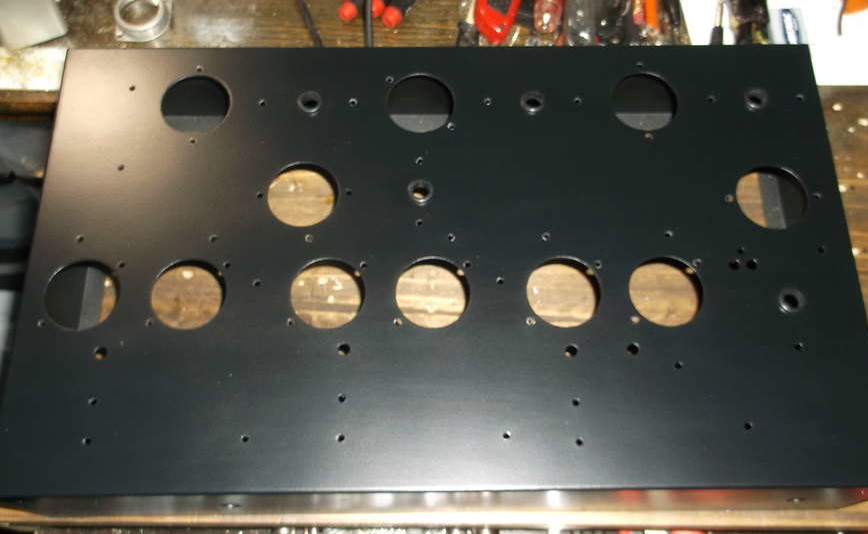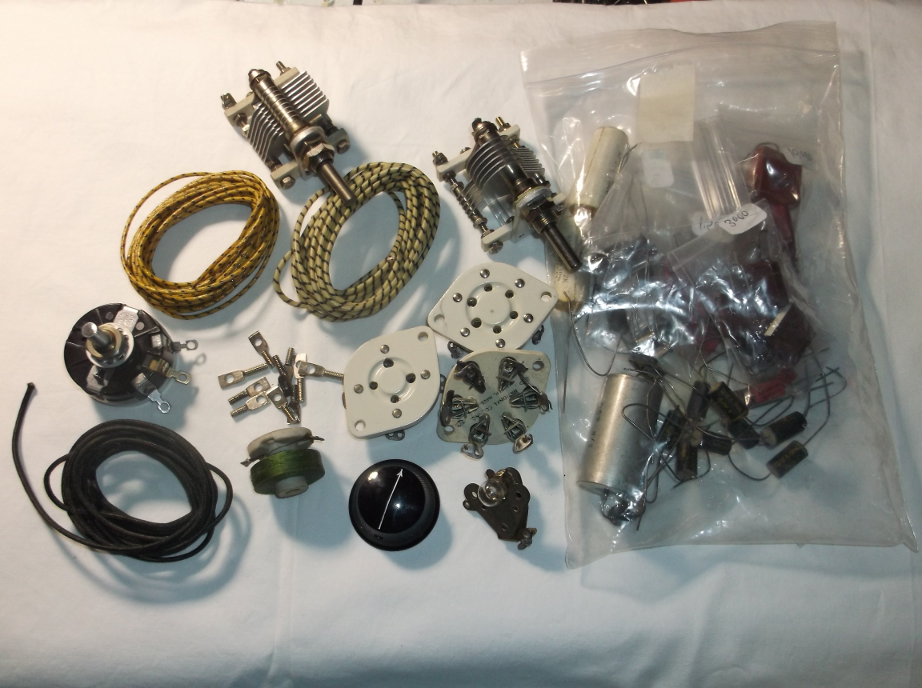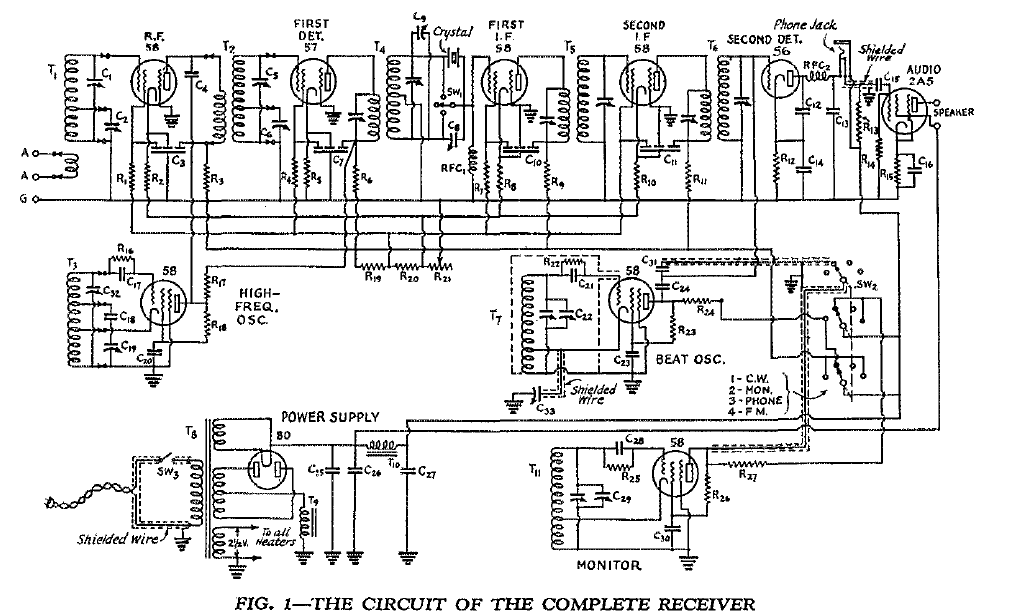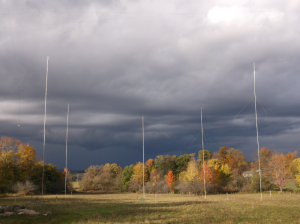Chassis – Prep and Paint
As mentioned in Post #1, I found a nice Bud aluminum chassis (17x8x2) at a local hamfest. I laid out and marked the positions of the tubes, transformers, RF coil sockets, crystal filter unit, etc. However, there was not enough room to fit the 2A5/42 audio output tube (or it’s output transformer for that matter)! I conceded to the idea that I would have to build the audio output circuit on a separate chassis.
But luck once again came to the rescue. While visiting a local “junk” dealer to acquire some tubes and Hammarlund coil forms, I found a larger NOS Bud aluminum chassis (17x10x3) and an old receiver cabinet amongst the piles of vintage goods. This new chassis would be more than sufficiently sized to accommodate the entire receiver circuit without resorting to an outboard audio amplifier. It was also a perfect fit in the old cabinet.
I proceeded to lay out the parts and mark locations on the new chassis. Once again, I was met with another obstacle. Continue reading …..




